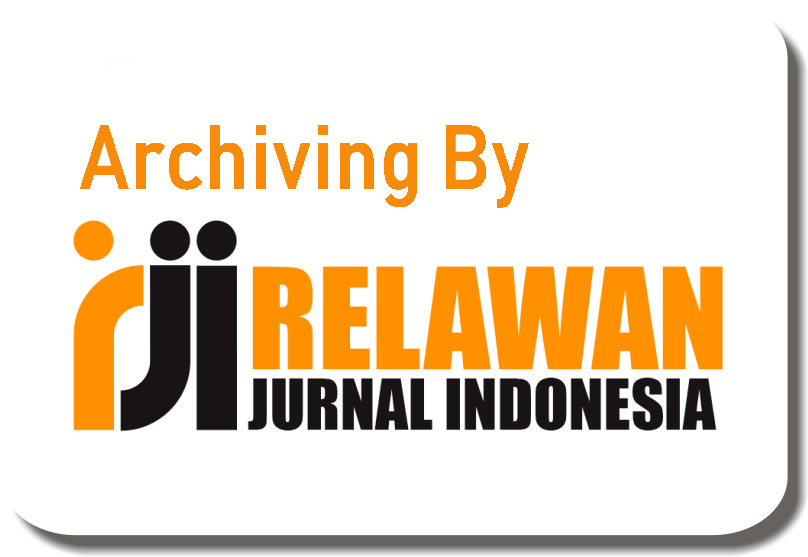The Correlation Between Learning Environment and Motivation on the Development of Students Speaking Skills at Ma Nwdi Gereneng
Abstract
This study aims to examine the correlation between the learning environment and motivation on students’ speaking skills at MA NWDI Gereneng. Speaking is one of the essential components in English language learning, requiring not only linguistic mastery but also psychological support and a motivating environment. This research applied a quantitative correlational method involving 20 eleventh-grade students. The instruments used were a learning environment questionnaire, a motivation questionnaire, and a speaking test assessed through four indicators: fluency, accuracy, interaction, and comprehensibility. Data were analyzed using Pearson correlation and multiple linear regression. The results showed a very strong and significant correlation between the learning environment and speaking skills (r = 0.975, p < 0.01), and between motivation and speaking skills (r = 0.950, p < 0.01). Simultaneously, both variables significantly influenced students’ speaking performance, with a determination coefficient (R²) of 0.976. This means that 97.6% of the variation in students’ speaking skills can be explained by their learning environment and motivation. These findings emphasize the importance of a supportive, engaging classroom environment, along with the development of both intrinsic and extrinsic motivation, in enhancing students’ speaking ability in English. Teachers and schools should focus on creating positive classroom conditions and encouraging student motivation to support the success of English language learning.
Keywords
Full Text:
PDFReferences
Abidin. (2015). Keterampilan Berbicara: Konsep dan Aplikasi dalam Pembelajaran Bahasa. Jakarta: Penerbit Kencana.
Alizadeh, M. (2019). The Impact of Motivation on Second Language Acquisition. International Journal of Research in English Education, 4(1), 1-13.
Alqahtani, M. (2020). The Importance of Motivation in Language Learning. Journal of Educational and Social Research, 10(2), 1-8.
Altay, M., & Aksoy-Çınar, A. (2025). The Role of Educational Games in Reducing Speaking Anxiety. Journal of Applied Linguistics, 15(1), 20-35.
Ary, D., Jacobs, L. C., & Sorensen, C. K. (2022). Introduction to Research in Education. Wadsworth Publishing.
Botes, E., Duxbury, A., & Steyn, A. (2025). Motivation and Positive Emotions: A Pathway to Enhanced Second Language Speech. Journal of Second Language Studies, 2(1), 45-60.
British Council. (2025). The Future of English: A Global Perspective. London: British Council Publications.
Brown, H. D. (2004). Language Assessment: Principles and Classroom Practices. New York: Longman.
Creswell, J. W. (2020). Research Design: Qualitative, Quantitative, and Mixed Methods Approaches. Sage Publications.
Creswell, J. W. (2021). Educational Research: Planning, Conducting, and Evaluating Quantitative and Qualitative Research. Pearson Education.
Dörnyei, Z. (2020). Motivation in Second Language Learning. Routledge.
Dörnyei, Z., & Ushioda, E. (2021). Teaching and Researching Motivation. Routledge.
Edunesia. (2025). Unsupportive Learning Environments and Their Effects on Student Performance. Edunesia Research Report, 7(3), 112-125.
Emzir. (2019). Metodologi Penelitian Pendidikan: Kuantitatif & Kualitatif. Jakarta: Raja Grafindo Persada.
Frase, H. (2018). The Classroom Learning Environment. New York: McGraw-Hill.
Gee, J. P. (2018). An Introduction to Discourse Analysis: Theory and Method. Routledge.
Goh, C., & Burns, A. (2020). Teaching Speaking: A Holistic Approach. New York: Routledge.
Goh, C., & Burns, A. (2022). Teaching Speaking: A Holistic Approach. London: Routledge.
Godwin-Jones, R. (2018). Technology and Language Learning: The Role of Digital Tools. Language Learning & Technology, 22(1), 5-17.
Halliday, M. A. K. (2019). An Introduction to Functional Grammar. London: Edward Arnold.
Jannah, M., Fikriyah, H., & Prasetyo, B. (2021). The Effect of Classroom Environment on Students’ Speaking Ability. Journal of English Language Teaching, 10(2), 150-165.
Kotera, Y., Vansteenkiste, M., & Deci, E. L. (2021). The Synergistic Role of Intrinsic and Extrinsic Motivation. Journal of Educational Psychology, 113(4), 601-615.
Kulsum, U., Wati, S., & Sari, N. (2025). Exploring Students' Difficulties in Speaking English: A Case Study. Journal of Language and Education, 8(4), 210-225.
Lai, C., & Hwang, G. J. (2020). Effects of Mobile Learning on Students’ Speaking Performance and Motivation. Journal of Computer Assisted Learning, 36(5), 780-792.
Luoma, S. (2020). Assessing Speaking. Cambridge University Press.
Mashburn, P. (2020). The Physical Environment of the Classroom. New York: Routledge.
Miyashita, T., Yonekura, A., & Nakamura, Y. (2023). Research Methods for Social Sciences. Tokyo: University of Tokyo Press.
Noels, K., Pelletier, L., & Vallerand, R. (2019). Internalization of Extrinsic Motivation in Second Language Learning. The Modern Language Journal, 103(3), 510-525.
Nugroho, D., & Mustaji. (2020). Pendidikan sebagai Fondasi Pengembangan Karakter dan Keterampilan. Jurnal Pendidikan, 15(1), 10-25.
Richards, J. C., & Renandya, W. A. (2019). Methodology in Language Teaching: An Anthology of Current Practice. Cambridge University Press.
Ryan, R. M., & Deci, E. L. (2000). Self-determination theory and the facilitation of intrinsic motivation, social development, and well-being. American psychologist, 55(1), 68.
Sugiyono. (2018). Metode Penelitian Kuantitatif, Kualitatif, dan R&D. Bandung: Alfabeta.
Sudaryono. (2017). Metodologi Penelitian: Pendekatan Kuantitatif, Kualitatif, dan Mix Method. Jakarta: Raja Grafindo Persada.
Swain, M., & Lapkin, S. (2019). Interaction and Second Language Learning: Two Perspectives. In The Routledge Handbook of Second Language Acquisition (pp. 123-140). Routledge.
Syamsul., & Rudy. (2020). Spiritual intelligence education in the Konur. Surah Al-Luqman. Journal Salimiya, 1(2), 156-168.
Tao, L., & Cheng, H. (2022). The Role of Speaking Skills in Second Language Learning. Journal of Language and Education, 8(1), 45-57.
Tuan, N. H., & Mai, T. N. (2021). Factors affecting students' speaking performance at English speaking classes. Journal of Language Teaching and Research, 12(3), 510-517.
UNESCO. (2021). Reimagining our futures together: A new social contract for education. Paris: UNESCO Publishing.
Vansteenkiste, M., Aelterman, N., De Muynck, G. J., Haerens, L., Patall, E. A., & Reeve, J. (2020). Fostering personal meaning and motivation through autonomy-supportive education: Current evidence and future directions. Educational Psychologist, 55(1), 23-39.
Vygotsky, L. S. (2021). Mind in Society: The Development of Higher Psychological Processes. Harvard University Press.
Wang, M.-T., & Degol, J. L. (2023). Amotivation and Its Impact on Academic Performance. Journal of Educational Psychology, 115(2), 200-215.
Wang, F., & Zheng, J. (2021). The Evolving Role of English in Global Communication. Journal of Global English Studies, 5(1), 1-15.
Wathawatthana, J., Tananuraksakul, B., & Siripornchai, A. (2025). The Effects of Anxiety and Confidence on English Speaking Performance. Journal of Language Teaching, 18(2), 88-102.
Widiati, U., Suryanto, A., & Susanto, R. (2024). Technology-Enhanced Learning Environment and Speaking Practice. Journal of English Teaching and Learning, 15(1), 60-75.
Widyawati, R., & Marjuni, S. (2023). Peran Shadow Teacher dalam Meningkatkan Kemandirian Anak Berkebutuhan Khusus di Sekolah Inklusi. Jurnal Bimbingan dan Konseling Pendidikan, X(X).
DOI: https://doi.org/10.31004/jele.v10i6.1320
Refbacks
- There are currently no refbacks.
Copyright (c) 2025 Adib Nazri, Zahratul Fikni, Linda Riana, Ari Prasetyaningrum

This work is licensed under a Creative Commons Attribution-ShareAlike 4.0 International License.



